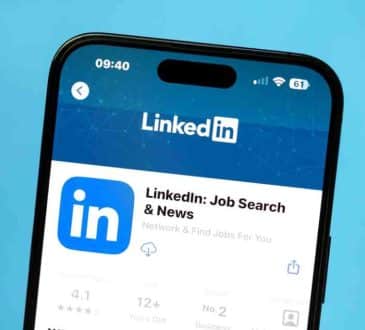Should Every CEO Have a Head of Thought Leadership?

Forward-thinking CEOs have long understood the organizational and personal value of being thought leaders. Now research, via Edelman and LinkedIn, quantifies how absolutely essential that has become for attracting new business opportunities, with 41% of CEOs reporting that they include companies in Requests for Proposal specifically because of their thought leadership.
To help the C-Suite make the most of this powerful tool for business development, some organizations are introducing a new position: The Head (or Director) of Thought Leadership. But do you really need one?
We explored that question with several experts who are already fulfilling this role at top companies, including social media powerhouse Hootsuite, digital marketing consultancy SapientRazorfish, and ITMSA, a leader in helping IT firms excel at marketing. Their answers to the three key questions posed can help you decide if a Head of Thought Leadership should be your next hire.
First, what should be a CEO’s role in thought leadership?
“The CEO is critical for setting the tone, both internally and externally, for culture and a point of view in the market. That, to me, is what thought leadership is about,” says Amber Naslund, Senior Director for Industry Leadership at Hootsuite. “Having a distinctive vantage point about trends and potential risks or challenges impacting your market, as well as what best practices are, is important for CEOs in order to help their brand and company stand out.”
Rob Leavitt, Head of Thought Leadership for ITSMA, concurs, adding, “Great thought leadership always starts at the top. Companies that drive growth with thought leadership need to build it into the culture; it’s hard to do this without active CEO commitment and support. This doesn’t mean CEOs drafting white papers and blog posts, but it does mean investing in thought leadership development, incenting and rewarding subject matter experts, and serving as a ‘chief educational officer’ to clients, prospects, media, and other influencers in the market.”
In short: you, as CEO, need to be understood, inside and outside the organization, as the driving force behind your organization’s insights, foresight and the intellectual capital that sets you apart from the competition. At minimum this means strategically informing, and financially supporting, the organization’s overall thought leadership effort. Ideally, it also includes a commitment to projecting yourself personally as a leading thinker for your company and industry — which brings us to the second question.
How can busy CEOs find time for creating thought leadership content?
There’s no one-size-fits all approach to help perpetually timed-strapped leaders get their thinking into the marketplace. Richard Fouts, Head of Thought Leadership for SapientRazorfish, offers this advice: “Busy C-Suiters who are also good writers make time to write about topics they are passionate about. But they can also have their communications team interview them, then write a thought leadership piece on their behalf. Many CEOs use their PR firm to do this, or they simply hire a qualified freelance writer (who is also a good interviewer) to help them amplify their thinking in the media, both mainstream and social.”
Whatever the methodology, Fouts cautions that it must observe one essential rule:
“When creating content, the CEO’s passion has to be authentic. Otherwise, it will come off as opportunistic or promotional. IBM’s Ginni Rometty, for example, is passionate about emerging technologies. She is particularly well-versed in how artificial intelligence will change the way organizations compete. And, contrary to other executives, she rejects the term ‘AI.’ Moreover, I have heard her talk about AI technologies without referring to IBM Watson at all. That’s pretty darn smart.”
The net takeaway: don’t allow yourself the excuse of being too busy. If you don’t choose to leverage your own communication skills, then make thought leadership a team effort. And above all, make it authentic to your company’s purpose, your own passion — and relevant to your audience, which brings us to our third key question.
What type of content should CEOs create to reach their peers?
It’s important to remember that, while your thought leadership and content marketing efforts should be well-integrated, they are not identical pursuits. So while some content can be successfully formulaic (why do you think there are still so many “7 Reasons Why…” posts?), thought leadership, particularly for top executives, is necessarily less predictable.
“[Executive content] should emulate the kind of media they consume elsewhere, like the Harvard Business Review or some of the major news publications,” according to Naslund. “In addition, creating value is key. Content that serves as thinly-veiled marketing material won’t cut it for the C-Suite.”
And Leavitt of ITSMA adds, “There’s no magic formula for content that hits home in the C-Suite. It’s easy to say that short-form is best for incredibly busy executives, but we know from ITSMA research that executives will read, listen, and view content in any format if it’s directly relevant, credible, useful, and timely. So focus and quality are the top concerns with content for executives, not format. That being said, the primary goal with executives should be content for conversation — content that sparks questions and personal connection, not content that seeks to provide all the answers in one quick read or view. The best thought leadership for executives happens informally, in person or on the phone, with content being the starting point for a deeper discussion.”
So, do you need a Head of Thought Leadership?
As the research indicates, pursuing thought leadership is no longer optional. But choices do remain in terms of how you become a thought leader, both as an organization and a CEO. Few top leaders can (or should) create content themselves; most will delegate it to a traditional mix of internal PR and marketing functions and external consultants. But given the complexity, diversity and requisite quality of the undertaking, CEOs will be well-advised to get the support of experts who can create and coordinate the kind of executive thought leadership effort that truly builds brands and businesses.
Add CEOWORLD magazine to your Google News feed.
Follow CEOWORLD magazine headlines on: Google News, LinkedIn, Twitter, and Facebook.
Copyright 2024 The CEOWORLD magazine. All rights reserved. This material (and any extract from it) must not be copied, redistributed or placed on any website, without CEOWORLD magazine' prior written consent. For media queries, please contact: info@ceoworld.biz









